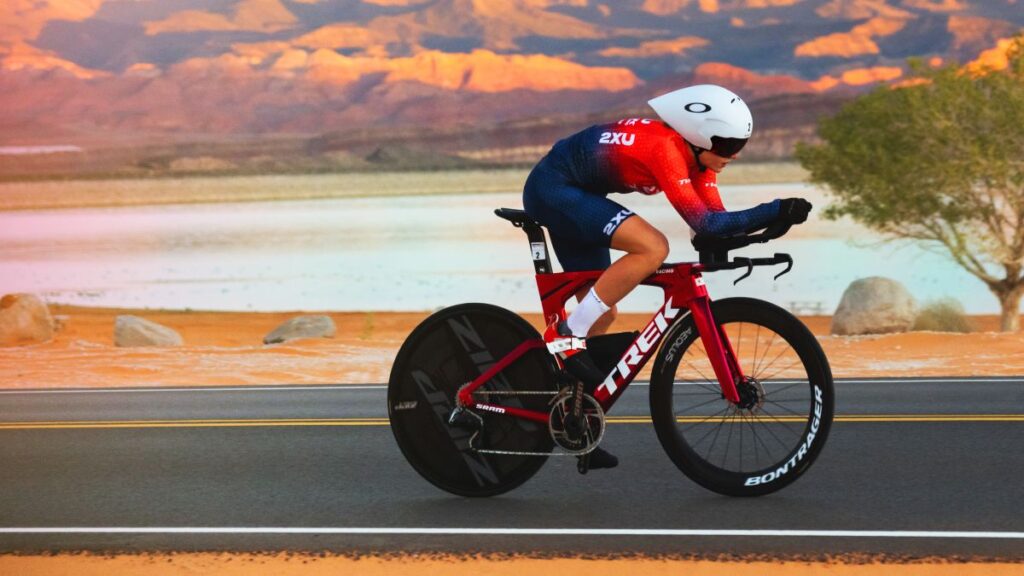When it comes to tackling an IRONMAN triathlon, having the right bike can make all the difference. Triathlon bikes are specifically designed to provide optimal speed, aerodynamics, and comfort for long-distance events. Whether you’re a seasoned triathlete or preparing for your first IRONMAN, selecting the best Ironman Bike is a crucial part of your journey.
In this guide, we’ll delve into the best Ironman Bikes for Ironman events, highlight essential features to look for, and provide a detailed comparison table to help you make an informed choice.
What Makes Triathlon Bikes Special?
Ironman Bikes differ from standard road bikes in several ways, making them ideal for IRONMAN races:
- Aerodynamics: Designed with wind-tunnel-tested frames and integrated components to reduce drag.
- Geometry: The frame geometry places the rider in a forward-leaning position, improving efficiency.
- Integrated Storage: Features like bento boxes and hydration systems are common.
- Comfort: Long-distance rides demand a balance of speed and comfort, which triathlon bikes provide.
Top Triathlon Bikes for Ironman
To simplify your decision-making process, here’s a detailed table analyzing the top triathlon bikes for Ironman events. We’ve also included links to where you can purchase these bikes.
| Bike Model | Price Range | Key Features | Where to Buy |
|---|---|---|---|
| Cervélo P-Series | $3,400 – $6,000 | Lightweight, aerodynamic, integrated storage | Cervélo Official Website |
| Trek Speed Concept | $4,999 – $13,000 | Wind-tunnel tested, adjustable fit, storage | Trek Bikes |
| Specialized Shiv Disc | $7,000 – $15,000 | Disc brakes, customizable storage, lightweight | Specialized Bikes |
| Canyon Speedmax CF SLX | $5,000 – $9,000 | Integrated cockpit, precision handling | Canyon Bikes |
| Felt IA Series | $3,500 – $12,000 | Lightweight, versatile build options | Felt Bicycles |
| BMC Timemachine | $6,000 – $14,000 | Aerodynamics, integrated storage, sleek design | BMC Switzerland |
Key Factors to Consider When Choosing a Triathlon Bike
1. Frame Material
Most Ironman Bikes are made from carbon fiber, which offers an excellent balance of weight, stiffness, and comfort. Some entry-level bikes may use aluminum, but carbon is generally preferred for its aerodynamic benefits.
2. Aerodynamics
Look for bikes with wind-tunnel-tested frames and components, such as deep-section wheels and integrated cockpits.
3. Fit and Comfort
Ensure the bike’s geometry matches your body dimensions. Many brands offer adjustable cockpits and seat positions to fine-tune the fit.
4. Storage Integration
IRONMAN races demand efficient hydration and nutrition systems. Bikes with integrated bento boxes and hydration systems are a great choice.
5. Braking System
Disc brakes provide better control and stopping power, especially in wet conditions. Many high-end models now feature disc brakes.
6. Price
Determine your budget and choose a bike that offers the best features within your range. Remember, additional costs for upgrades and accessories may arise.
Why Invest in a Triathlon Bike?
While road bikes can be used for IRONMAN races, triathlon bikes offer distinct advantages:
- Improved aerodynamics reduce energy expenditure.
- Optimized geometry minimizes fatigue, especially on long rides.
- Integrated storage solutions streamline transitions.
If you’re serious about triathlon racing, investing in a dedicated triathlon bike is a wise decision.
FAQs About Triathlon Bikes
1. What is the difference between a triathlon bike and a road bike?
Ironman Bikes feature aerodynamic frames, forward-leaning geometry, and integrated storage solutions, while road bikes are designed for versatility and climbing efficiency.
2. Are triathlon bikes worth the investment?
If you regularly compete in triathlons or IRONMAN events, a triathlon bike’s aerodynamic and comfort benefits can significantly improve your performance.
3. How do I choose the right size for a triathlon bike?
Consult the manufacturer’s size chart and, if possible, get a professional bike fitting to ensure optimal comfort and performance.
4. Can I use a triathlon bike for regular road cycling?
Ironman Bikes are optimized for flat, straight courses and may not perform as well on hilly or technical routes. They are best reserved for races and specific training sessions.
5. What accessories should I consider for my triathlon bike?
Common accessories include aero water bottles, bento boxes, power meters, and upgraded wheels.
Conclusion
Selecting the best triathlon bike for your IRONMAN race is a critical decision that depends on your budget, goals, and personal preferences. Whether you opt for the aerodynamic prowess of the Trek Speed Concept or the versatility of the Felt IA Series, investing in a high-quality triathlon bike will elevate your performance and help you achieve your goals.
For more insights on triathlon gear, training tips, and race-day strategies, check out this comprehensive triathlon resource.
